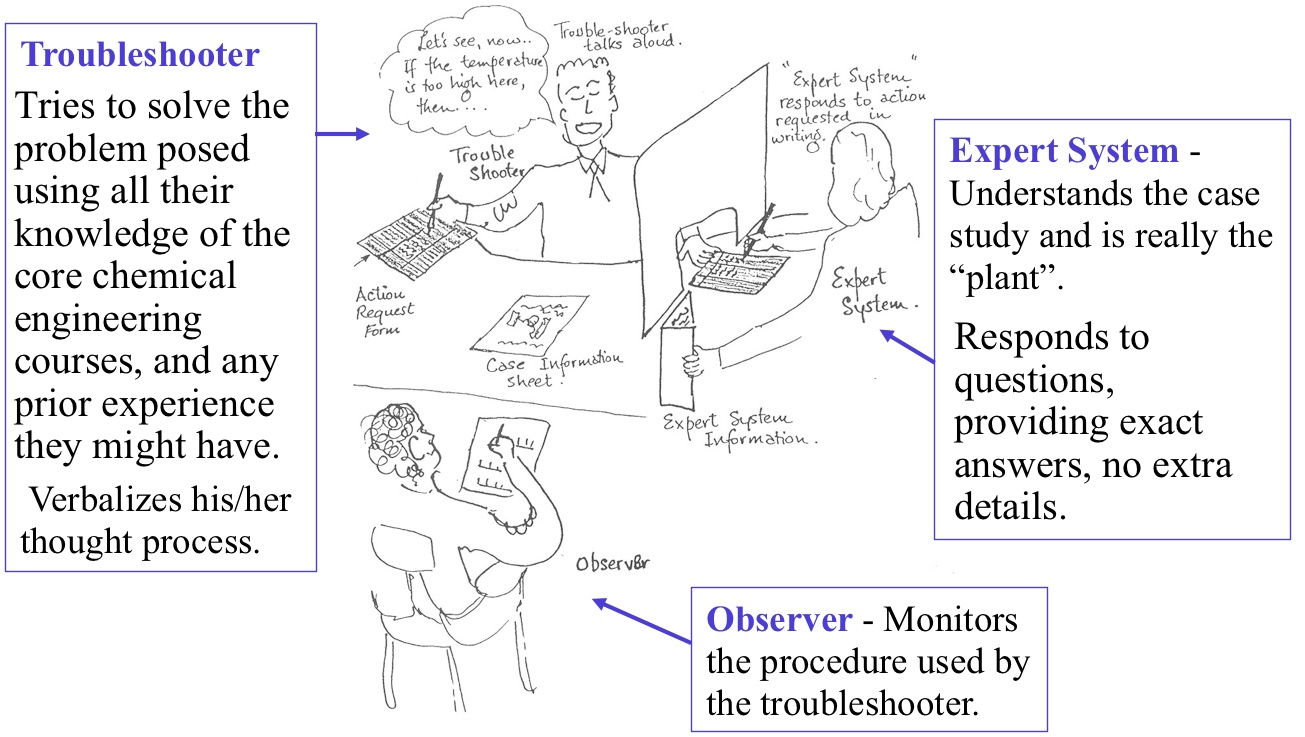Difference between revisions of "Assignment 8 - 2013"
Kevin Dunn (talk | contribs) |
Kevin Dunn (talk | contribs) |
||
| Line 1: | Line 1: | ||
The tutorials on Monday are in ChemEng here at McMaster as ''The Triads''. It was a concept developed by Don Woods at McMaster University. Several other universities have "copied" this model, but it is unique to McMaster. | The tutorials on Monday are in ChemEng here at McMaster as ''The Triads''. It was a concept developed by Don Woods at McMaster University. Several other universities have "copied" this model, but it is unique to McMaster. Most students review that this part of 4N4 was their favourite section; that they got to suddenly realize how Chemical Engineering comes together. | ||
Each person in the class will perform 3 troubleshooting exercises; every time you will take on a rotating role (about 25 minutes per exercise). | Each person in the class will perform 3 troubleshooting exercises; every time you will take on a rotating role (about 25 minutes per exercise). | ||
Revision as of 04:23, 21 November 2013
The tutorials on Monday are in ChemEng here at McMaster as The Triads. It was a concept developed by Don Woods at McMaster University. Several other universities have "copied" this model, but it is unique to McMaster. Most students review that this part of 4N4 was their favourite section; that they got to suddenly realize how Chemical Engineering comes together.
Each person in the class will perform 3 troubleshooting exercises; every time you will take on a rotating role (about 25 minutes per exercise).
Expert System
You will receive a binder at the start of the tutorial, read it over for 20 minutes. You must come to an understanding of the process. You will represent the plant to the troubleshooter.
Think about how "the problem" will affect all of the process variables. Try to anticipate the kinds of questions that the Troubleshooter might ask; or experiments or tests that he/she might ask to be performed. Give results of experiments. Do not give explanations. Give correct information but do not be generous. If, for example, the problem occurs periodically, and you are asked to give the lab analysis for one sample taken: assume Murphy's law applies and give them the result when the system was operating normally.
Insist that their instructions, or requests be asked precisely.
If they ask, " Inspect the instrument" then respond "It's OK". If they ask what you did, then say "I went out and looked at it." Be tough. Do not offer more information than they asked for.
You will discuss the solution with your two colleagues after the exercise.
- Please do not share information about your case with anyone.
- Do not mark the stapled sheets in the folder; these folders are reused in future years and cost substantial time and money to prepare.
Troubleshooter
You have a challenging role to play.
You must talk aloud so that the Observer can track what you are doing. Talk out load about what you are thinking to solve the problem. At this stage of the course, your only goal is: solve the problem given to you.
You will submit a short electronic report on your experience as the troubleshooter. This will be graded as well.
Observer
As the Troubleshooter is tackling the problem, your task is to judge his/her progress. Write down bullet points of the questions the troubleshooter is asking the "plant" (expert system). At the end, your written document of neatly written bullet points is essentially a transcript of what happened (like a "black box" in an airplane). You will submit this report for grading.
